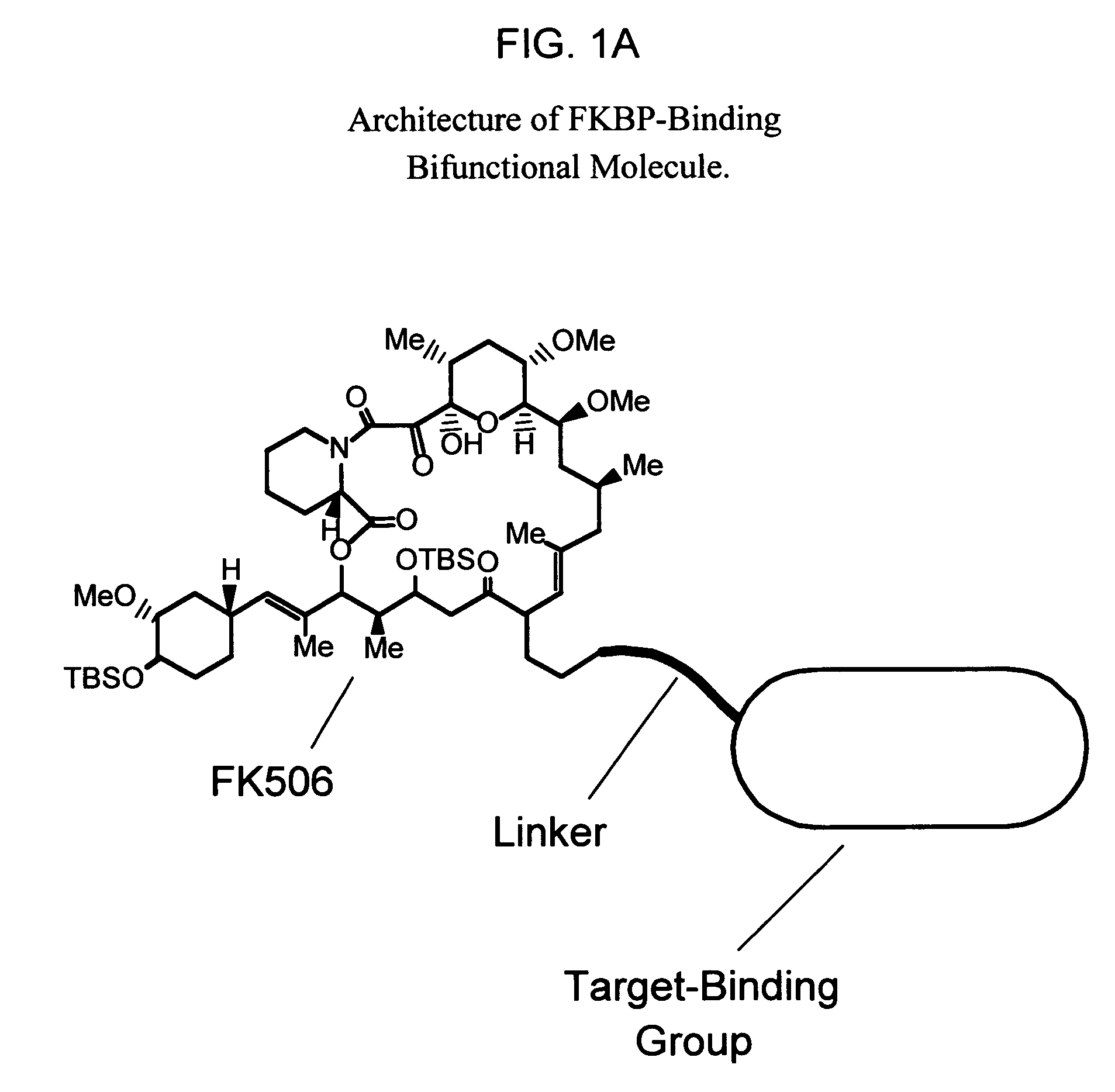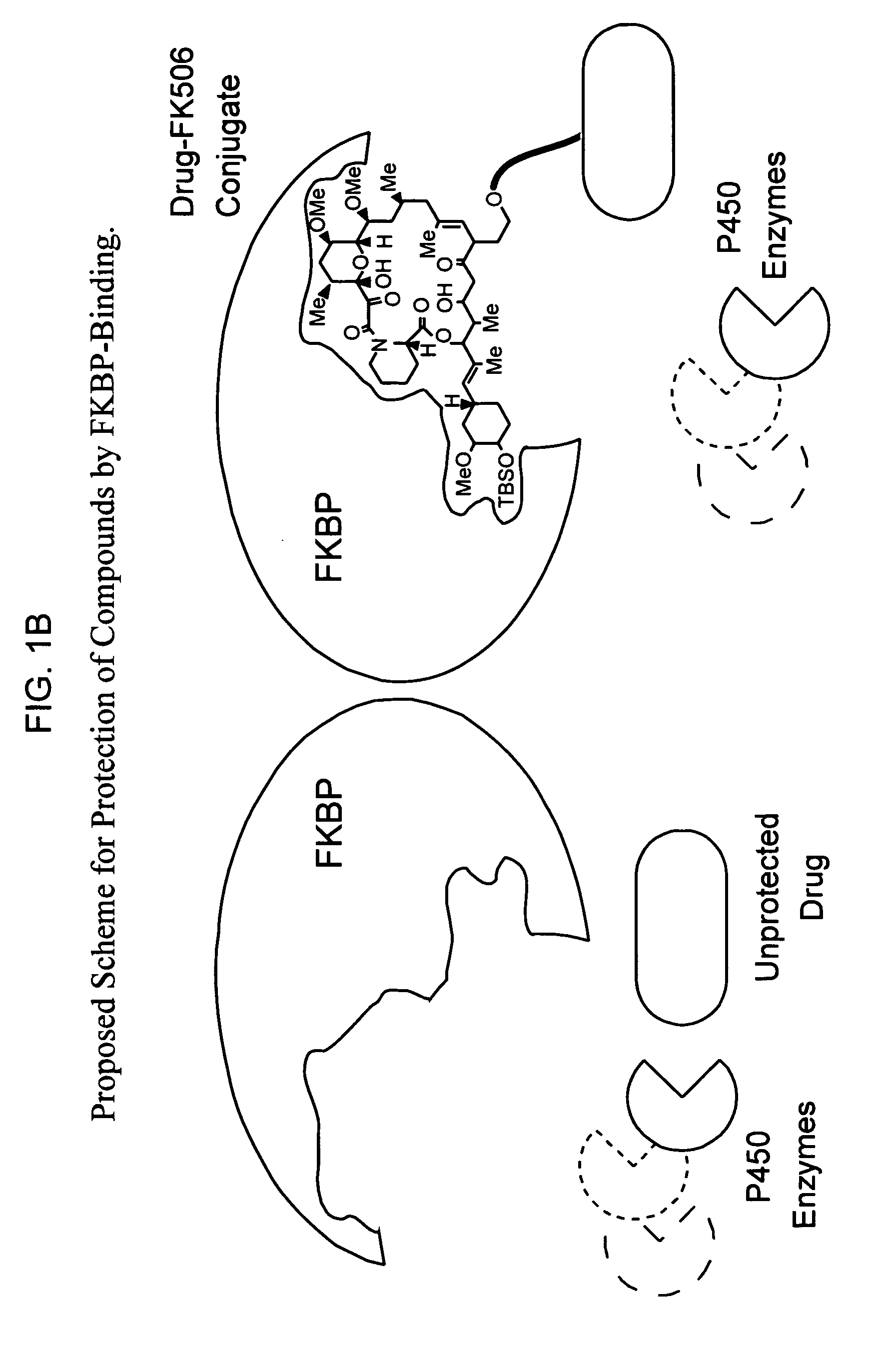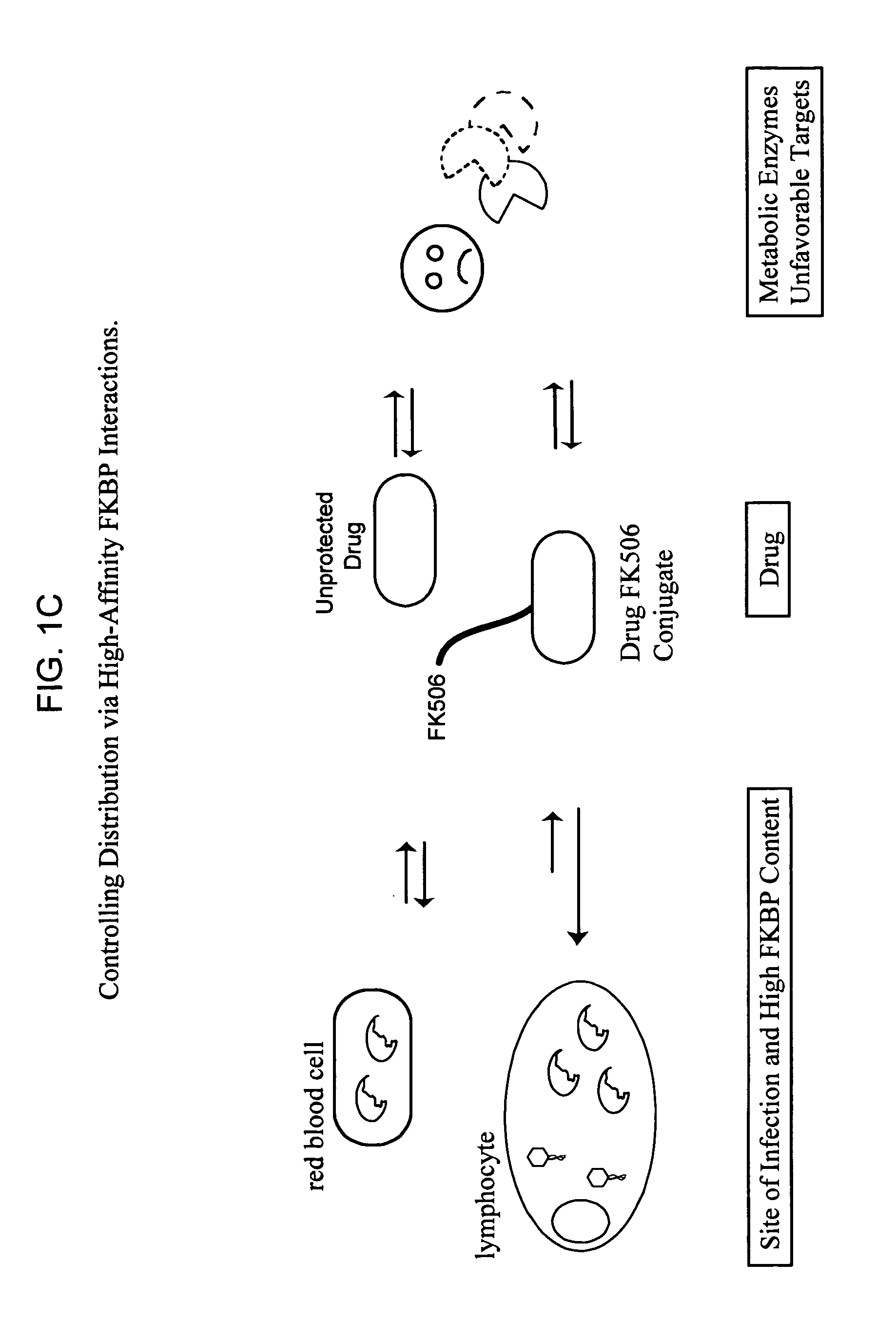Methods of screening bifunctional molecules for modulated pharmacokinetic properties
a bifunctional molecule and modulation technology, applied in the field of screening bifunctional molecules for can solve problems such as predictable modulation of pharmacokinetic properties
- Summary
- Abstract
- Description
- Claims
- Application Information
AI Technical Summary
Benefits of technology
Problems solved by technology
Method used
Image
Examples
example 1
Synthesis of FKBP-Binding Conjugates
[0151] Since curcumin reduces aggregation of amyloid beta and has been shown to have anti-cancer potential, a binfunctional molecule consisting of curcumin and FK506 was generated. Commercial curcumin was coupled to a linker by treatment with C2H5ONa, followed by 4-bromoaniline in pyridine. After installation of the primary amine, the curcumin derivative was coupled to the succinimidyl ester of FK506. The activation of FK506 proceeded as previously described (Spencer et al., (1993) Science 262:1019). The product was confirmed by mass spectrometry. The reaction scheme for producing the curcumin-FK506 bifunctional compound is reproduced below:
[0152] Since TZDM-like molecules have potential as imaging agents and therapeutics for Alzheimer's disease, a bifunctional molecules consisting of TZDM conjugated to a synthetic ligand of FKBP (SLF) was also generated: TZDM was prepared from in refluxing DMSO from the aminothiol and aldehyde (as described ab...
examples 2
Cytochrome P450 Susceptibility Assay
[0153] The curcumin-FK506 and TZDM-SLF bifunctional compounds were assayed to determine whether the compounds had at least one modulated pharmacokinetic property. Both the curcumin-FK506 and TZDM-SLF bifunctional compounds include a ligand to the pertidyl-prolyl isomerase FKBP. Therefore, FKBP12 was used in the assay as the PMP. A control was also performed with FK506 in the presence and absence of FKBP12.
[0154] The coding sequence of human FKBP12 was subcloned into a pGEX2t vector. Bacteria transformed with this vector produce a fusion protein between FKBP12 and glutathione S-transferase (GST). FKBP12 is purified by standard methods and the GST tag enzymatically removed. Pure FKBP was flash-frozen, and stored at −80° C. at 10-100 micromolar in HEPES or phosphate buffer pH 7.0.
[0155] The CYP3A4 compound and the green substrate VIVID® DBOMF (Invitrogen) were used in the assay with the recombinant human FKBP12 (rhFKBP12) and one of the bifunction...
example 3
[0157] Cellular and tissue distribution of a bifunctional molecule consisting of a FKBP-binding group was also assessed. Such re-distribution is due to changes in the physicochemical characteristics of the new molecule and also is driven by specific, high-affinity interactions with FKBP. For example, the distribution of TZDM and TZDM-SLF were studied in cultured COS-1 cells (see FIG. 3). The intrinsic fluorescence of TZDM was used was a convenient handle for following drug distribution. As shown in FIG. 3 (right panel), TZDM is a lipophilic molecule that resides in membranes when added to COS-1 cells. However, addition of an FKBP-binding group to TZDM reduces membrane insertion in favor of cytoplasmic distribution (see FIG. 3, right panel). This result is consistent with binding to cytoplasmic FKBP12. Matching the distribution of FKBP-binding drug to the known location of a pathogen or target may generate a more effective drug with lower toxicity simply by pu...
PUM
| Property | Measurement | Unit |
|---|---|---|
| concentration | aaaaa | aaaaa |
| concentration | aaaaa | aaaaa |
| concentration | aaaaa | aaaaa |
Abstract
Description
Claims
Application Information
 Login to View More
Login to View More - R&D
- Intellectual Property
- Life Sciences
- Materials
- Tech Scout
- Unparalleled Data Quality
- Higher Quality Content
- 60% Fewer Hallucinations
Browse by: Latest US Patents, China's latest patents, Technical Efficacy Thesaurus, Application Domain, Technology Topic, Popular Technical Reports.
© 2025 PatSnap. All rights reserved.Legal|Privacy policy|Modern Slavery Act Transparency Statement|Sitemap|About US| Contact US: help@patsnap.com



